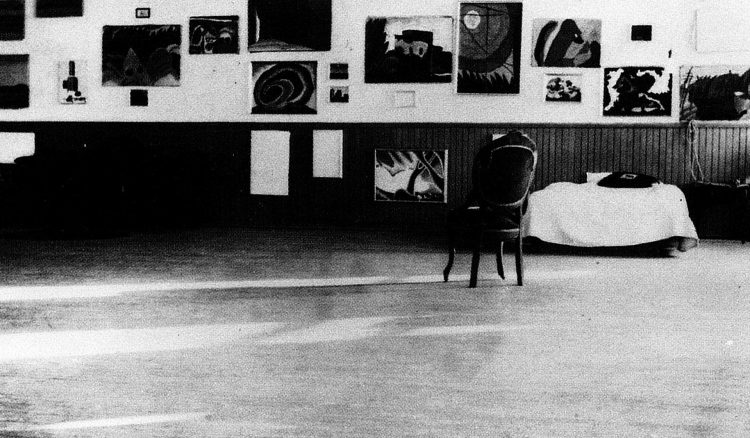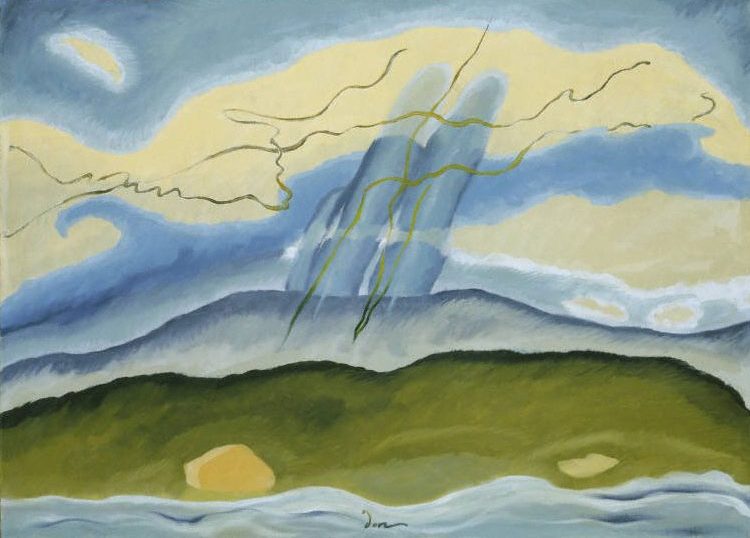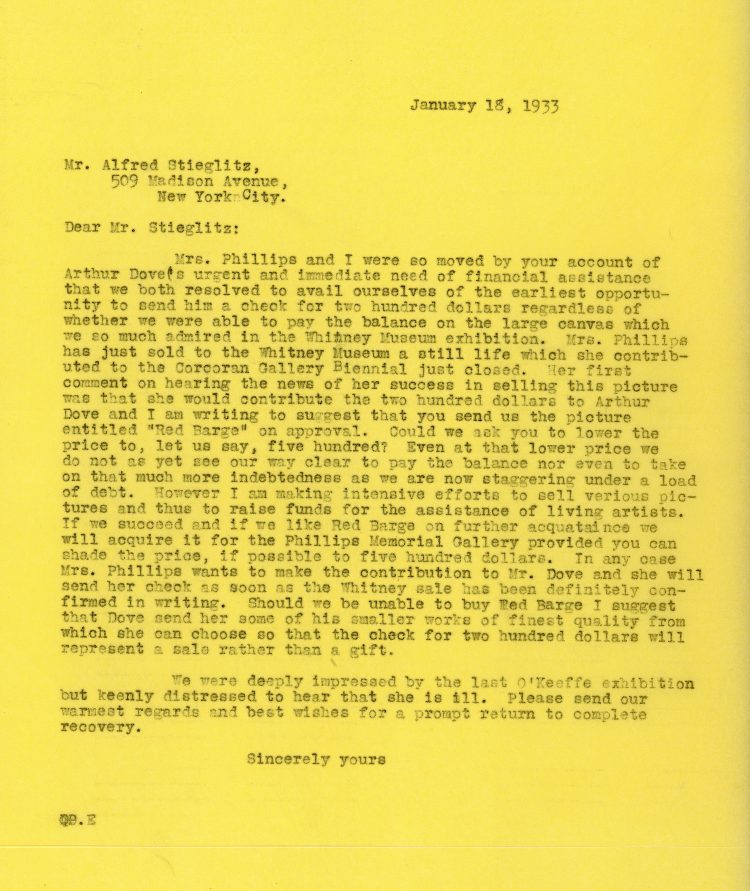Through correspondence in the Phillips archives, photographs, and more, the Reading Room exhibition Dear Dove, Dear Phillips, Dear Stieglitz explores the relationship between artist, patron, and gallery dealer.
Read THE EARLY YEARS, 1912-1933
THE GENEVA YEARS, 1933-1938
In 1933, following the death of his mother, Arthur Dove moved to Geneva, New York, to settle his family’s estate. Dove was ambivalent about going home—he found the landscape inspiring but practical problems took valuable time away from painting. Conditions in their farmhouse were primitive and Dove reported to Phillips that when the temperature hit minus 33 degrees he and his wife ran back and forth between three wood burning stoves to keep warm. In a later letter, Dove wrote Phillips, “Your idea of doubling the subsidy in the spring is marvelous and really gives me the much longed for privilege of planning for extensive work ahead. This going out to paint then rushing back and slamming the door quickly to keep the wolf out is not soothing to the nerves.”
During their final year in Geneva, the Doves moved into town and lived in the Dove Block, a commercial building on one of the city’s main corners that had been erected by his father. Dove set up his studio on the entire third floor, previously home to a roller skating rink. The artist was ecstatic about being able to hang so many of his paintings on the wall at once.

Dove Block, Geneva, New York, Studio Wall installation, 1938
Dove’s studio at the Dove Block—measuring 60-by-70-square feet and surrounded by 10-foot windows—was the largest he ever had. The space was comfortable and had plenty of light and heat. Dove wrote Elmira Bier, Phillips’s executive assistant, “This place is immense. I hope that the feeling of space will creep into the coming paintings.”

Arthur Dove, Sun Drawing Water, 1933, Oil on canvas, 24 3/8 x 33 5/8 in., The Phillips Collection, Acquired 1933
Duncan Phillips acquired this painting the same year it was created. The title refers to a poem written by Dove: “Works of nature are abstract/They do not lean on other things for meaning/The sun draws water from the sea.” Ribbon-like lines that refer to the unseen forces of nature flutter in the air above an undulating sea. Dove completed Sun Drawing Water in two weeks.

Duncan Phillips to Alfred Stieglitz, January 18, 1933
Phillips wrote Stieglitz to tell him the good news that his wife, Marjorie, who shared his concern about Dove’s urgent need for financial assistance, decided to give Dove a contribution of 200 dollars which she had earned from the proceeds of a recent sale of one of her paintings to the Whitney Museum of American Art. Phillips mentioned the possibility of purchasing Red Barge from Dove as long as he could acquire it at a discount.

Alfred Stieglitz to Duncan Phillips, April 7, 1937
Stieglitz expressed his hope to see Phillips at his New York gallery soon. After Duncan and Marjorie visited Stieglitz and saw Dove’s exhibition, Stieglitz wrote Phillips on April 12, “I can’t tell you what your visit and that of Mrs. Phillips yesterday and today meant to me.”
Stay tuned for Part III (The Geneva Years) of this series and visit the Reading Room to see the exhibition.
